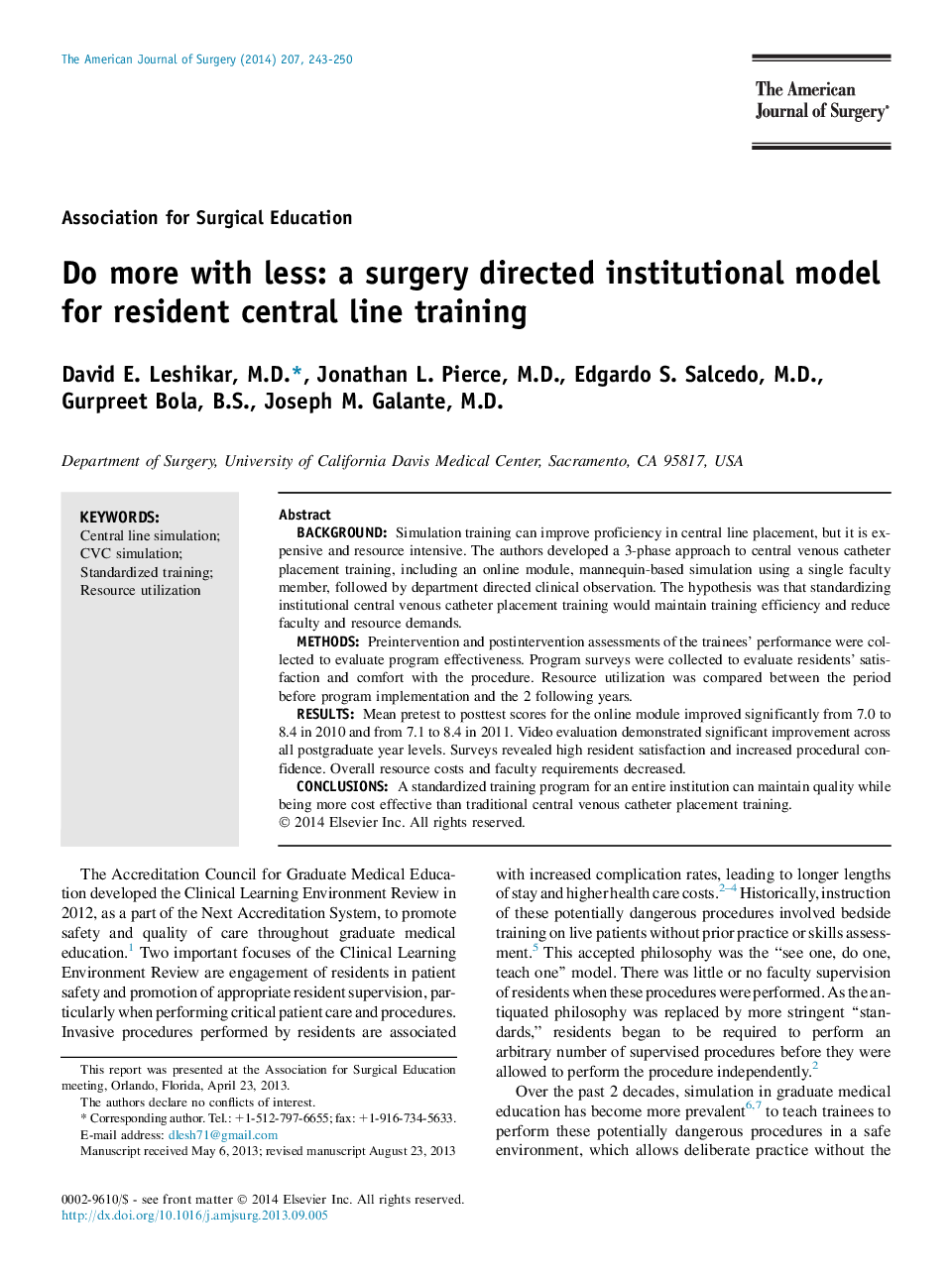| Article ID | Journal | Published Year | Pages | File Type |
|---|---|---|---|---|
| 4278933 | The American Journal of Surgery | 2014 | 8 Pages |
BackgroundSimulation training can improve proficiency in central line placement, but it is expensive and resource intensive. The authors developed a 3-phase approach to central venous catheter placement training, including an online module, mannequin-based simulation using a single faculty member, followed by department directed clinical observation. The hypothesis was that standardizing institutional central venous catheter placement training would maintain training efficiency and reduce faculty and resource demands.MethodsPreintervention and postintervention assessments of the trainees' performance were collected to evaluate program effectiveness. Program surveys were collected to evaluate residents' satisfaction and comfort with the procedure. Resource utilization was compared between the period before program implementation and the 2 following years.ResultsMean pretest to posttest scores for the online module improved significantly from 7.0 to 8.4 in 2010 and from 7.1 to 8.4 in 2011. Video evaluation demonstrated significant improvement across all postgraduate year levels. Surveys revealed high resident satisfaction and increased procedural confidence. Overall resource costs and faculty requirements decreased.ConclusionsA standardized training program for an entire institution can maintain quality while being more cost effective than traditional central venous catheter placement training.
